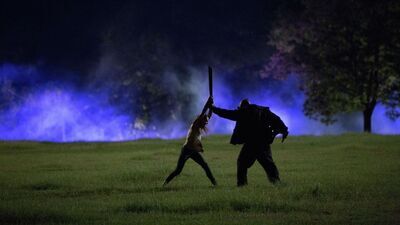Supposedly, this is all in service of female empowerment. We should equate ourselves with Final Girls, and missing girls, and dead ones, too, so that we can better understand the circumstances that brought them there—the, we assume, men with twisted needs that stalk, harass, and take them from their pleasant beds.
“When something horrible happens in reality, whether it be war or kidnapping or murder or assault or any of those things,” horror director Jen Soska told The Cut in 2016, “there’s unfortunately no censorship. When you watch a movie, you can deal with those issues. You can come as close as you can to experiencing what the characters are experiencing from the safety of your own seat.”
But, as comfortable as I am in my seat, I don’t want to relate to the Final Girl anymore. Or, I don’t want to relate only to the Final Girl, someone who is contracted by her role to navigate her pain alone, with limited vulnerability. She is an admirable force, she who transcends masculinity and femininity—physically intimidating, like a Rodin sculpture, and lovely like a Renoir flower—but she is alone. To a female audience member, the Final Girl acts as an everywoman, but, on-screen, she is separate and above the rest of womankind. She doesn’t know empowerment as much as she understands isolation.
I’m ready for films to take on more varied horror stories. Multiplayer horror games like “Dead by Daylight,” or ensemble-led TV shows like “Search Party” are already exploring them through their necessity for multiple survivors, which allow for more elaborate narratives, gender dynamics, and outcomes.
Horror movies, on the other hand, have been placing solo female protagonists on a rotating conveyor belt for too long, releasing the same kind of character for the same lonely narrative: though, as a woman, you might contain critical poise and power, you will inevitably experience unique pain. So shut yourself down. Close yourself up. Become hardened to the world.

